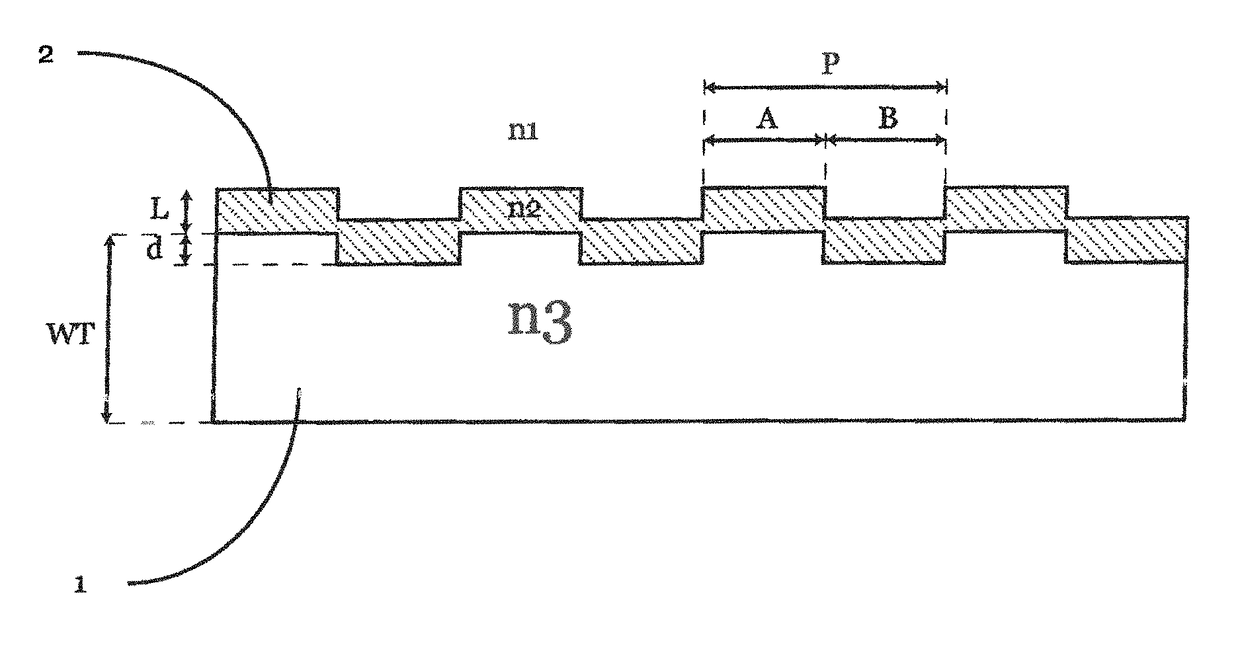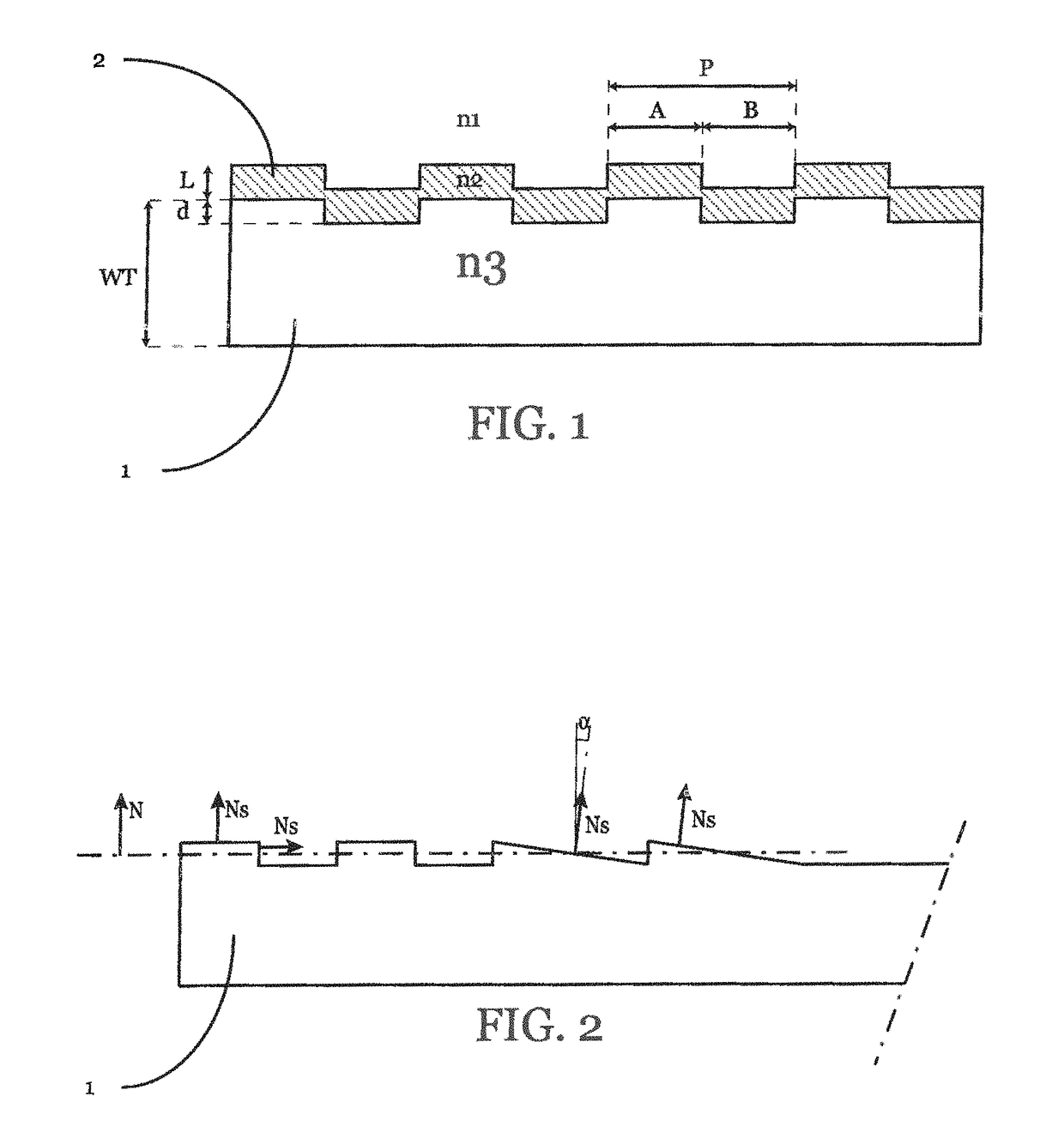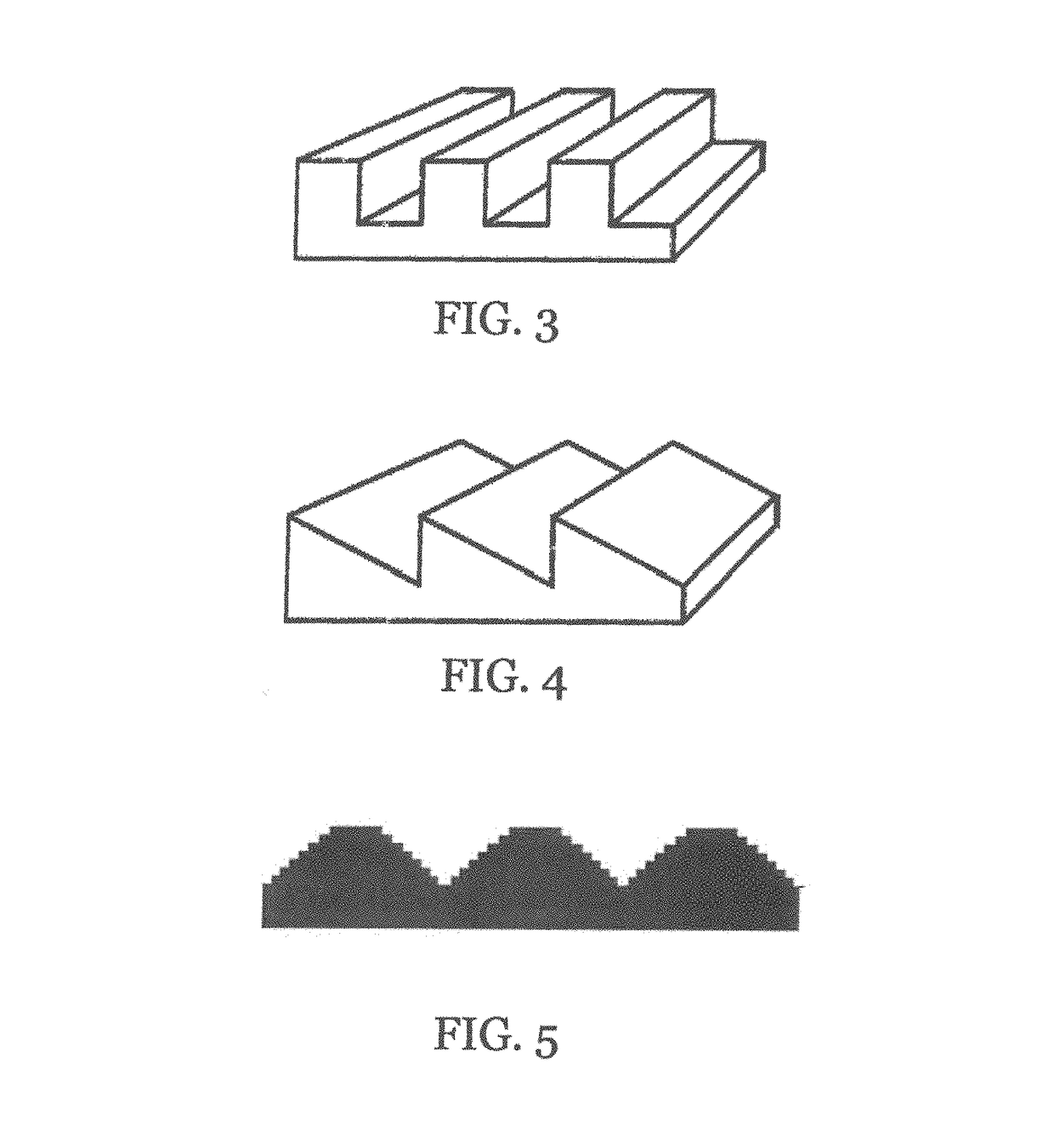Method to optimize a light coupling waveguide
a technology of coupling waveguide and light coupling, which is applied in the field of optimizing light coupling waveguide, can solve the problems of inherently poor extremely low efficiency of grating coupling to multi-mode waveguide, and high cost of materials used, so as to achieve high efficiency and high efficiency. efficiency, efficient coupling
- Summary
- Abstract
- Description
- Claims
- Application Information
AI Technical Summary
Benefits of technology
Problems solved by technology
Method used
Image
Examples
Embodiment Construction
[0041]Unless specified otherwise, every example disclosed in this document is using a waveguide in an ambient environment composed of air, i.e. with a refractive index n1=1. Also, unless specified otherwise, the incident light beam that hits the waveguide is polarized, with its polarization parallel to the structures of the grating, in other words, a TE polarized light.
[0042]The invention concerns a method for constructing a light coupling system wherein a grating comprising a repetition of patterns is manufactured on the surface of a multimode waveguide. Engraving, or hot embossing, or injection molding, or any other suitable method can be used to manufacture the grating. This method comprises a step of choosing a first set of parameters comprising:[0043]wavelength distribution of the incident light to be transmitted by the waveguide,[0044]polarized or unpolarized nature of said incident light,[0045]incident angle standard deviation (Sθ) of the incident light with respect to the wa...
PUM
| Property | Measurement | Unit |
|---|---|---|
| wavelength distribution | aaaaa | aaaaa |
| grating depth | aaaaa | aaaaa |
| grating depth | aaaaa | aaaaa |
Abstract
Description
Claims
Application Information
 Login to View More
Login to View More - R&D
- Intellectual Property
- Life Sciences
- Materials
- Tech Scout
- Unparalleled Data Quality
- Higher Quality Content
- 60% Fewer Hallucinations
Browse by: Latest US Patents, China's latest patents, Technical Efficacy Thesaurus, Application Domain, Technology Topic, Popular Technical Reports.
© 2025 PatSnap. All rights reserved.Legal|Privacy policy|Modern Slavery Act Transparency Statement|Sitemap|About US| Contact US: help@patsnap.com



